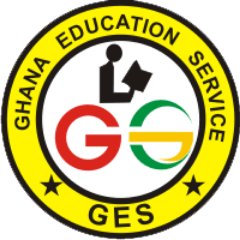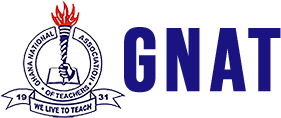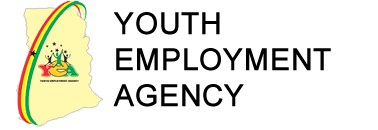The Challenge
Although primary school attendance has increased significantly across the world, learning levels remain low, particularly in English and math.1 In Ghana, data from this study’s initial survey showed that 94 percent of third grade students could not read at a third grade level, 18 percent could not identify English letters, and differences in within-grade test scores were greater than between first graders and third graders.2 The Ghana Ministry of Education developed the Teacher Community Assistant Initiative (TCAI) to improve student learning in existing government primary schools. In the program, teachers and teaching assistants—secondary school graduates from local communities—provided student-centered, targeted instruction for first to third grade students.
The Evaluation
In collaboration with IPA Ghana, the Ghana Education Services, the Ghana National Association of Teachers, and the National Youth Employment Program, researchers conducted a randomized evaluation to measure the impact of TCAI interventions on students’ learning outcomes in existing public school systems. A total of 500 public primary schools across Ghana were randomly divided into the following five groups:
- Pull-out remedial (100 schools): Teacher community assistants taught remedial classes for students at low learning levels for one hour per day during school, with a focus on math and English.
- After-school remedial (100 schools): Teacher community assistants taught remedial classes for students at low learning levels after school, with a focus on math and English.
- Classroom split (100 schools): Teacher community assistants pulled out half the class for part of the day to provide grade-level instruction on the teacher’s math and English lessons. The teacher remained with the other half of the class.
- Partial day tracking (100 schools): Teachers received materials and training to teach students at different learning levels for part of the day. Starting with the third term of implementation, teachers divided students across grades instead of dividing students across levels within the same classroom.
- Comparison Group (100 schools): Business as usual.
Results
The Teacher Community Assistant Initiative significantly improved students’ math and English test scores after two years in the program, equal to 27 percent of a grade level of learning. These effects persisted for students one year after they finished the program. Moreover, girls’ test scores increased significantly relative to boys’ scores in the remedial classes and partial day tracking while the test score gap between boys and girls widened in the comparison group. The pull-out remedial classes, after-school remedial classes, and partial day tracking were similarly cost-effective. Implementation of TCAI was imperfect; if all schools had fully implemented the program, student learning could have increased by nearly four times as much.
Cost-effectiveness
IPA's cost-effectiveness analysis estimated the impact of spending USD 100 (2025 currency) on four variants of targeted instruction. Learning gains (measured in standard deviations) were converted into additional years of education using a range of 4.7–6.8 years per SD, based on Evans and Yuan (2018):
- Pull-out remedial: 0.34–0.49 additional years of education per USD 100 spent
- After-school remedial: 0.36 –0.52 additional years of education per USD 100 spent
- Classroom split: 0.20–0.29 additional years of education per USD 100 spent
- Partial day tracking: 0.24–0.34 additional years of education per USD 100 spent
Policy Impact and Implications
Altogether, this intervention shows that with sufficient support, student learning can be increased by government employees in existing public school systems. Based on these results, researchers worked with IPA and the government to explore ways to improve implementation with stronger monitoring. This eventually led to a national scale-up of a targeted instruction-inspired program called Differentiated Learning.
Sources
1. World Bank Press Release, “70% of 10-Year-Olds now in Learning Poverty, Unable to Read and Understand a Simple Text,” World Bank Group, June 23, 2022, https://www.worldbank.org/en/news/press-release/2022/06/23/70-of-10-year-olds-now-in-learning-poverty-unable-to-read-and-understand-a-simple-text
2. Duflo, Annie, Jessica Kiessel, and Adrienne M. Lucas. "Experimental Evidence on Four Policies to Increase Learning at Scale." The Economic Journal (2024): ueae003.
Resources
- Numeracy Activity Book - This resource provides a number of games and activities that can be done to enhance the math lessons. They are ideal for practicing newly acquired skills or reviewing old lessons using a multisensory approach to learning.
- Numeracy Manual - The manual is the curriculum for the targeted instructions numeracy lessons and provides teachers with strategies for teaching the lessons. The lessons are given by skill/ subject and are not time bound, so a lesson could be taught in one day or one week, depending on the needs of the class.
- Numeracy Levels at a Glance (P3 and P4) - This resource is useful for providing structure for how lessons can be taught in an efficient manner. The resource is meant to help teachers spiral lessons and understand how best to incorporate old lessons into new ones, while using activities that are engaging for all learners. The page numbers in the bottom of each day were left blank to be filled by teachers in order to have them actively identify the resources where information would be pulled for the days lessons.
- Literacy Activity Book - This resource provides a number of games and activities that can be done to enhance the reading and writing lessons. They are ideal for practicing newly acquired skills or reviewing old lessons using a multisensory approach to learning.
- Literacy Manual - The manual is the curriculum for the targeted instructions literacy lessons and provides teachers with strategies for teaching the lessons. The lessons are given by skill/ subject and are not time bound, so a lesson could be taught in one day or one week, depending on the needs of the class.
- Literacy Levels at a Glance (P3 and P4) - This resource is useful for providing structure for how lessons can be taught in an efficient manner. The resource is meant to help teachers spiral lessons and understand how best to incorporate old lessons into new ones, while using activities that are engaging for all learners. The page numbers in the bottom of each day were left blank to be filled by teachers in order to have them actively identify the resources where information would be pulled for the days lessons.
- Understanding the LAG - A guide to help explain how best to use the Levels at a Glance Calendar to plan lessons.
Implementing Partners















